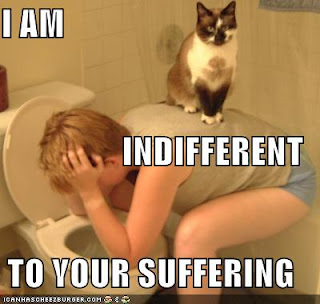Hurricane Sandy may have come and gone, but millions are still feeling the effects of the "Frankenstorm." Fortunately the storm didn't have much of an impact where I live, we got some heavy wind and rain, but no lasting damage. But we were *supposed* to be on the main track of the storm so I made sure to prepare for it.
Unfortunately, looking at the news lately, it seems like a lot of people who were directly hit didn't prepare, and they are suffering now. So, with that in mind, I figured I'd pass along some tips for when something like this happens again.
Keep in mind what you really need to survive: food, water, and shelter.
You should keep a minimum of one week's worth of non-perishable food in your house, one month is even better. That means canned and dried foods, if you lose electricity the food in your fridge and freezer isn't going to last for very long. Also make sure that you have a manual can opener in your kitchen, nothing would be worse than having a bunch of cans and no way to open them. Start collecting your food BEFORE the crisis appears imminent. You don't want to try to stock up when everyone else is out there clearing the shelves. Another thing to keep in mind: most grocery stores only keep enough stock for three days at a time.
Make sure you have a way to cook your food. If you have a gas range you can probably use that, otherwise you'll need another option. I have a propane camp stove, it's probably older than I am but it still works just fine. Barbecue grills will work in a pinch. If you're going to rely on either of those, make sure to keep some fuel on hand. Matches are also helpful to keep around.
Make sure you save enough water. You'll need it to drink, wash, and cook with. Depending on the size of your household that could be a lot of water. Consider options for storing water outside (like a rain barrel), and remember that you can purify water by boiling it or treating it with a tiny bit of bleach. Water purifiers and purification tablets are nice to have, but they aren't necessary.
Shelter, hopefully you'll already have this in the home you live in, but consider the time of year when you might experience a crisis. Temps in the Northeast this week are supposed to hover just above freezing, that is not good news for those still without power. Since the vast majority of modern homes are heated with electricity, you need to keep a plan in mind for how to heat your home if you lose the grid. Gas and propane powered heaters are an option, but if you use them you MUST ventilate your home to let the gas out. There have already been stories coming out of the coast about people that have died breathing their generator fumes. Don't burn your house down! If you have no other option, you can gather the household together in one room and huddle under blankets to stay warm.
Of course none of this is helpful if your house gets flattened. If you are under a mandatory evacuation order, GET OUT. Your lives are not worth the stuff in your home and you won't help anything by staying. Standing in front of your house and yelling at the storm to "go around" isn't going to work. If you do have to get out, it's not a bad idea to take food, water, blankets and a camp stove with you just in case.
Don't forget about your animals! If you have house pets, you should keep spare food on hand for them too. Have crates available if you need to grab them and go. Our horses are trickier, can you still get water for your horses if the power goes out? Do you have enough hay on hand if you can't get any for a week? (This is especially tough this year with the drought) What if you have to evacuate your horses? Will they load onto a trailer easily? Do you have a place to take them?
It's difficult to think about this stuff, literally it is. There's something called a
normalcy bias that nearly all people have that makes us think bad things won't happen to us. Unfortunately they do, but if you plan ahead you can make the aftermath a lot easier for yourself and your loved ones.
Stay safe out there.















































